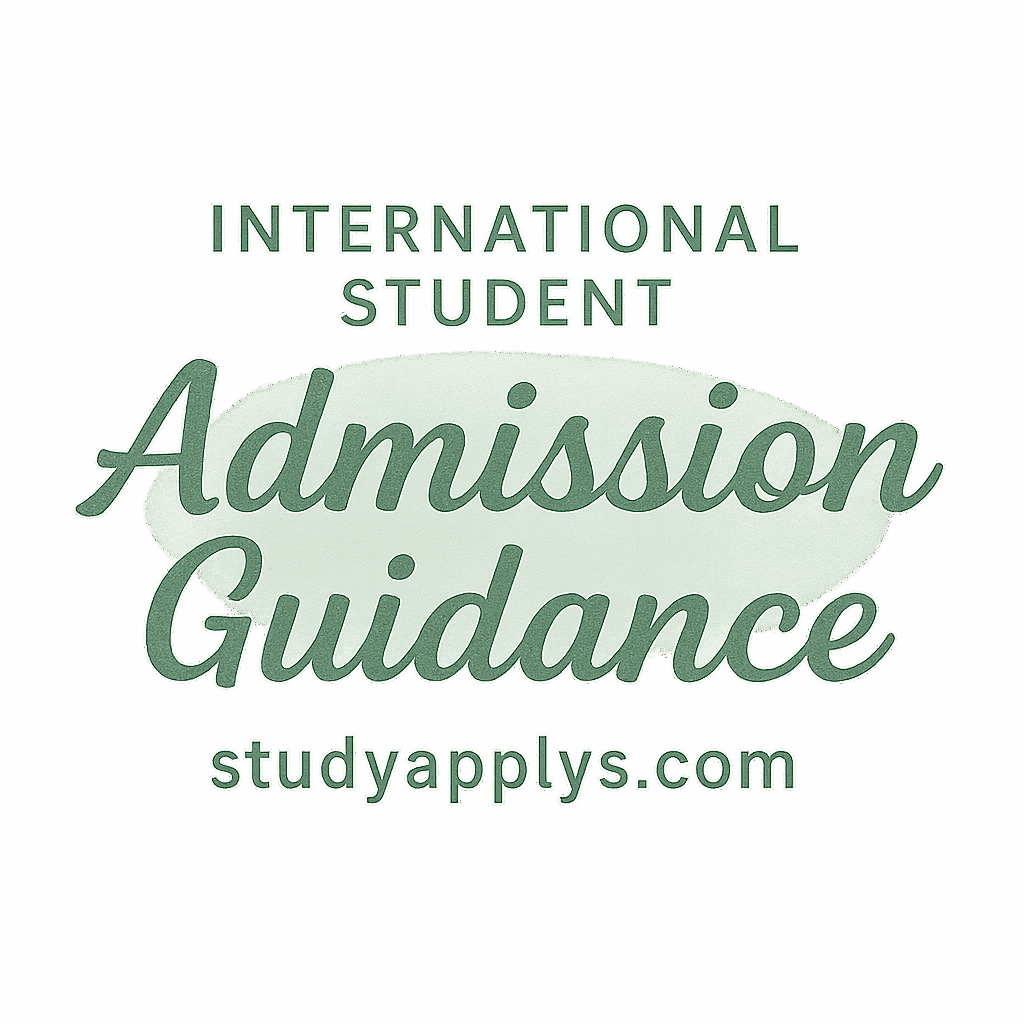So, you’ve decided to pursue your studies abroad or at a new institution—exciting, right? But let’s be real: the process can feel like trying to solve a jigsaw puzzle in the dark. That’s why student admission guidance for first-time applicants is not just helpful—it’s essential.
Let’s break it down step-by-step so you don’t get lost in the maze.
Why Student Admission Guidance Matters for First-Time Applicants
First-time applicants often face a whirlwind of questions: Where do I start? What documents do I need? When do I apply? The right admission guidance can turn that confusion into clarity. With so many universities and systems around the world, having a structured approach is a game-changer.
Whether you’re applying to the U.S., Canada, the UK, Australia, or anywhere else, these ten steps will help you stay on course.
Step 1: Understand Your Academic and Career Goals
Define Your Long-Term Vision
Before even thinking about applications, pause and ask yourself: What do I want to become in five years? Your academic path should align with your passions, skills, and long-term career goals.
Choose the Right Field of Study
Don’t choose a major just because it sounds impressive. Select a subject you genuinely enjoy. It will make studying more fulfilling and open doors to careers you’ll actually love.
Explore expert advice on choosing programs at StudyApplys to make an informed decision.
Step 2: Research Suitable Universities and Programs
Use Trusted Resources for University Search
Spend quality time comparing universities. Use official websites, rankings, and portals like StudyApplys to gather information on:
- Tuition fees
- Curriculum
- Location
- Campus facilities
Check Accreditation and Rankings
Always verify that the institution is accredited. Rankings matter, but they aren’t everything. Look at student satisfaction, graduate outcomes, and support services.
You can find trusted guidance through tags like student admission guidance and study abroad.
Step 3: Understand Application Requirements
Academic Transcripts and Documents
Universities will require your school or college transcripts. Make sure they are translated and notarized if needed. For more detail, check documentation requirements.
Standardized Test Scores
Many institutions require SAT, ACT, GRE, GMAT, etc. Know what’s expected based on your program and country.
Letters of Recommendation
Choose people who truly know your capabilities—teachers, supervisors, or mentors. Give them enough time and information to write a strong letter.
Refer to this helpful tag: application tips.
Step 4: Language Test Preparation
TOEFL, IELTS, or Duolingo – Which One’s for You?
If you’re a non-native English speaker, you’ll likely need one of these. Check what your target schools accept. Need help? StudyApplys test language prep has your back.
Prep Tools and Practice Techniques
Practice tests are a must. Use apps, join prep classes, or watch YouTube lessons. Also, check out resources under the test tag for updated guides.
Step 5: Credential Evaluation (If Needed)
When and Why You Need It
Some universities require credential evaluations to validate your transcripts. Organizations like WES or ECE do this. Check out tips under credential evaluation.
Not every school requires it, so review each university’s admission guide thoroughly.

Step 6: Craft a Compelling Personal Statement
Tell Your Story with Passion
Your statement of purpose is your chance to shine. Don’t write what you think they want to hear—write what truly matters to you.
What Admission Committees Look For
- Clarity of goals
- Passion for the subject
- Fit with the university
- Strong writing skills
Find more guidance in the guide and techniques sections of StudyApplys.
Step 7: Prepare for the Interview
Common Interview Questions
- Why did you choose this university?
- What are your long-term goals?
- How will you contribute to the campus?
Mock Interview Tips for Confidence
Practice with a friend or record yourself. You’ll identify weak spots and improve naturally. Mock interview prep can really boost your confidence.
Step 8: Submit a Strong, Complete Application
Avoid Last-Minute Rush
Don’t wait until the last minute to apply. Start at least 3–6 months in advance. Remember, good applications take time.
Double-Check for Errors and Missing Items
Proofread everything. One typo or missed document could mean a rejection. Learn more from the application preparation and steps tags.
Step 9: Visa and Immigration Process
Student Visa Application Tips
This is where things get serious. Once accepted, you’ll need to apply for a visa—usually requiring:
- University acceptance letter
- Financial documents
- Proof of language proficiency
Check visa process and visa and immigration pages for country-specific guidance.
Financial Proof and Documentation
Most embassies require proof you can afford tuition and living expenses. Bank statements or sponsor letters are typical requirements.
Explore real examples under the immigration and requirements sections.
Step 10: Post-Admission Steps
Accepting the Offer
Congrats! Once you get that acceptance letter, make it official. Pay deposits, sign agreements, and confirm housing.
Need help with the next steps? Visit post-admission steps.
Preparing for Departure
Get packing, book your flight, and maybe cry a little happy tear. It’s happening! Follow preparation and post-admission for the best send-off checklists.
Final Thoughts on Navigating the Admission Journey
Going through the student admission process for the first time can feel overwhelming—but it doesn’t have to be. With clear goals, proper planning, and the right guidance, you’ll navigate it like a pro.
Just take it one step at a time, and trust the process. And don’t forget: you’re not alone. Platforms like StudyApplys are designed to make your journey smoother and more successful.
FAQs
1. How early should I start the admission process?
Ideally, 9–12 months before your intended start date. This gives you enough time for tests, documents, and visa applications.
2. Do all universities require interviews?
Nope! Some do, especially for competitive programs, but many evaluate only your application materials.
3. What if I don’t have anyone to write my recommendation letter?
Try reaching out to past professors or supervisors. Even community leaders or coaches can help if they know your strengths.
4. Can I apply without test scores?
Some universities are test-optional, but others still require SAT, GRE, etc. Always double-check.
5. How do I prove financial support for the visa?
Bank statements, affidavits of support, scholarship letters, or loan sanction letters are usually accepted.
6. What’s the best way to practice for language tests?
Use online tools, official guides, and take multiple mock tests. StudyApplys test prep is a great place to start.
7. How do I know if I need credential evaluation?
If your education system is different from the country you’re applying to, you probably will. Always check the university’s official page or the credential evaluation tag.

